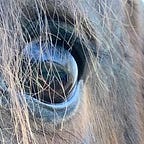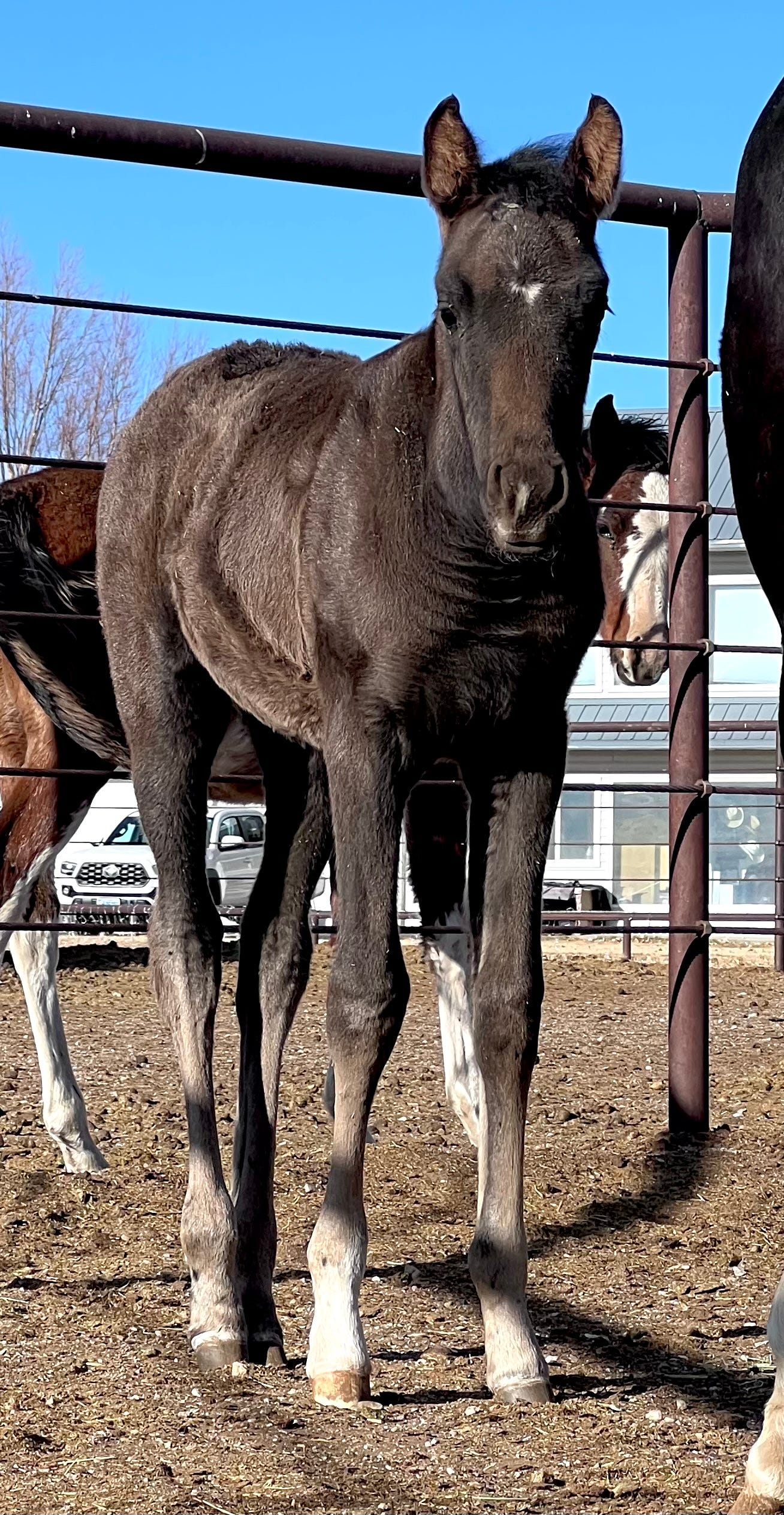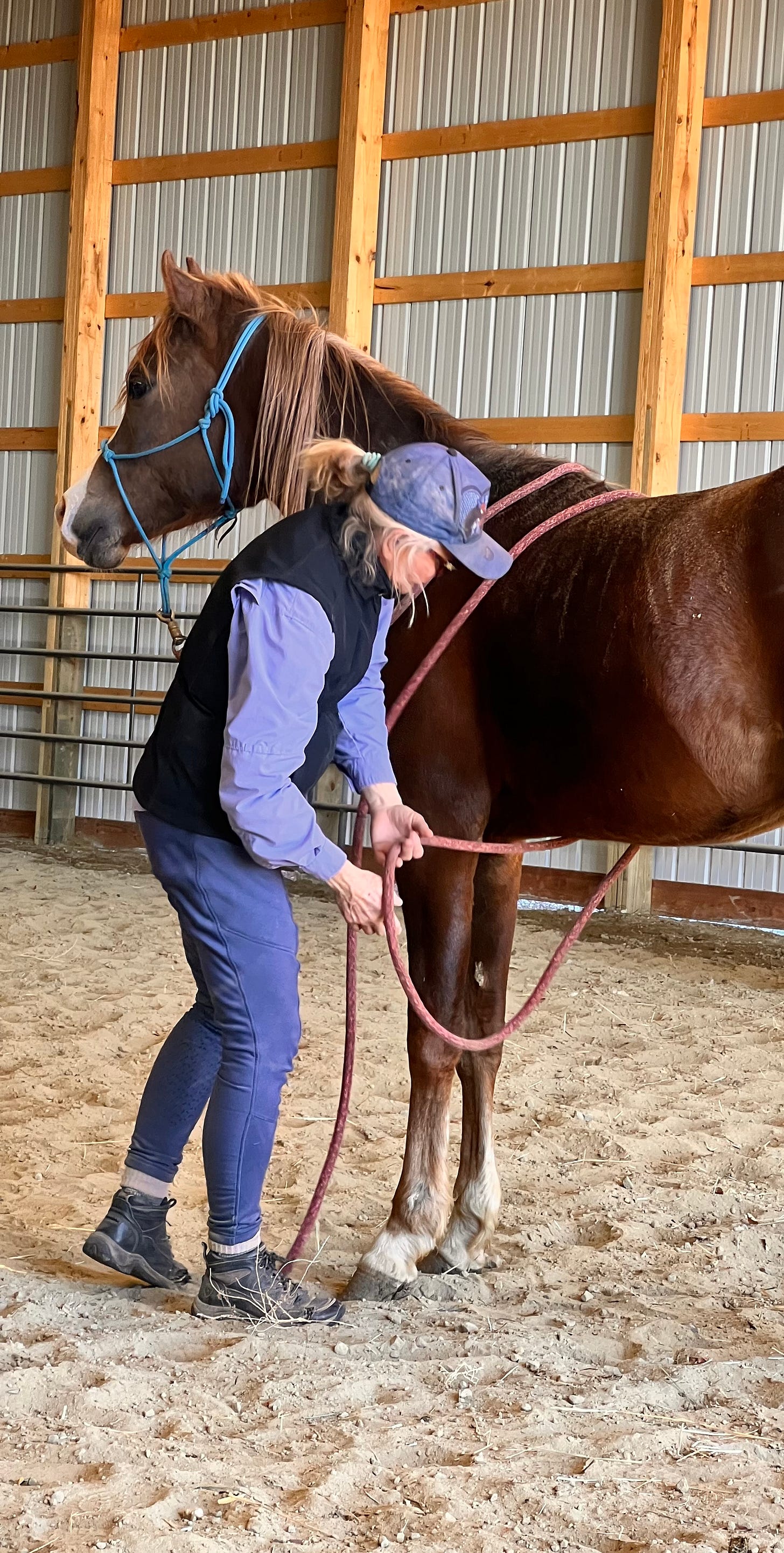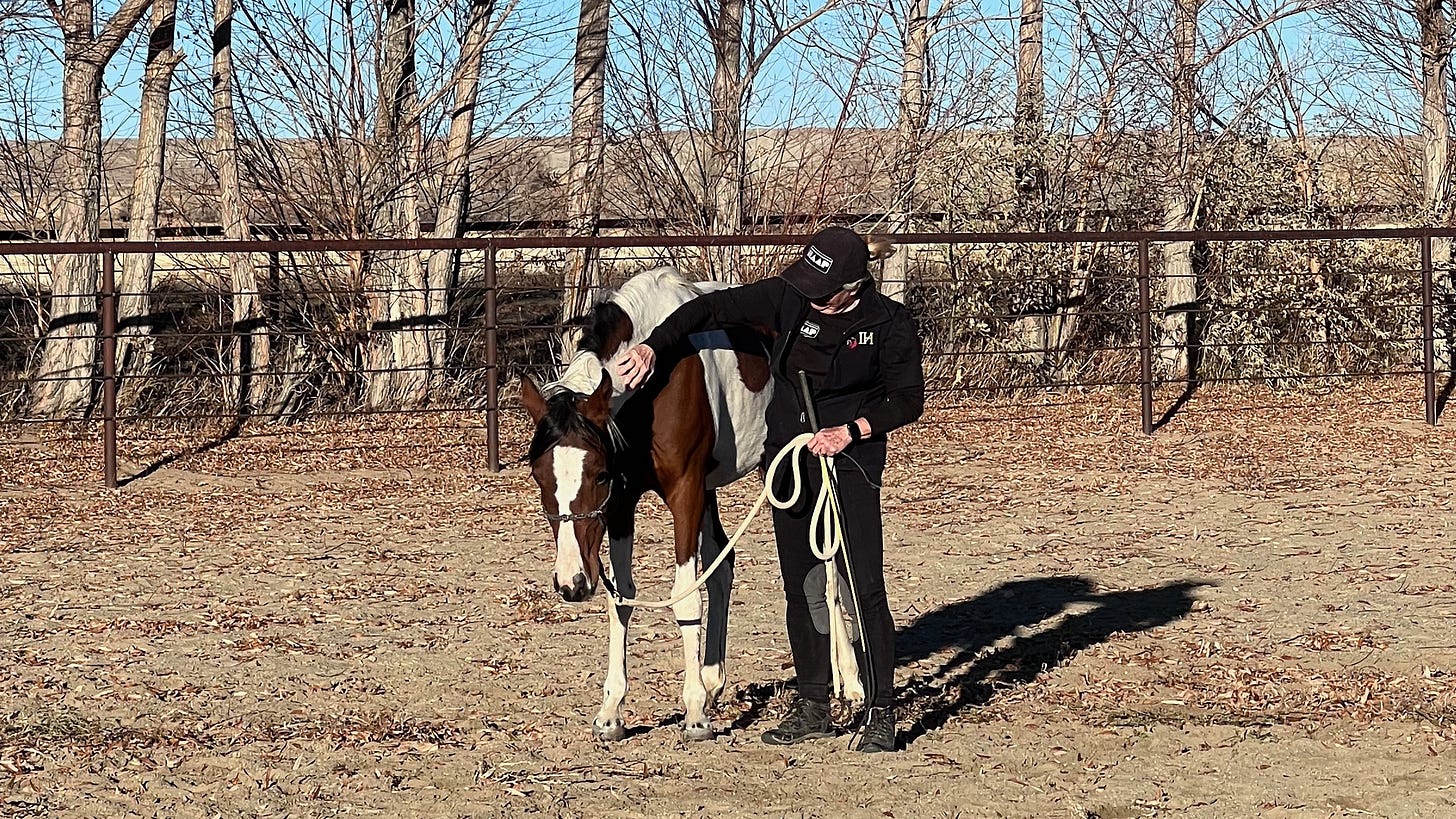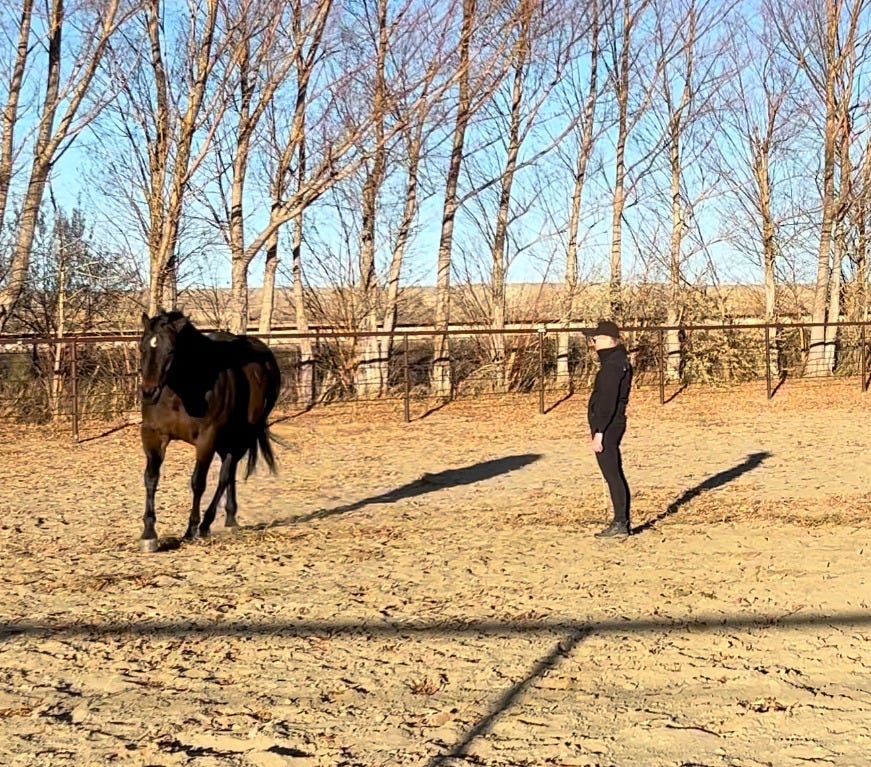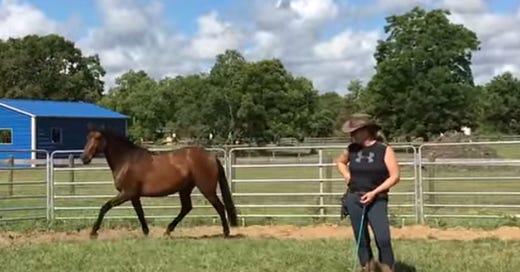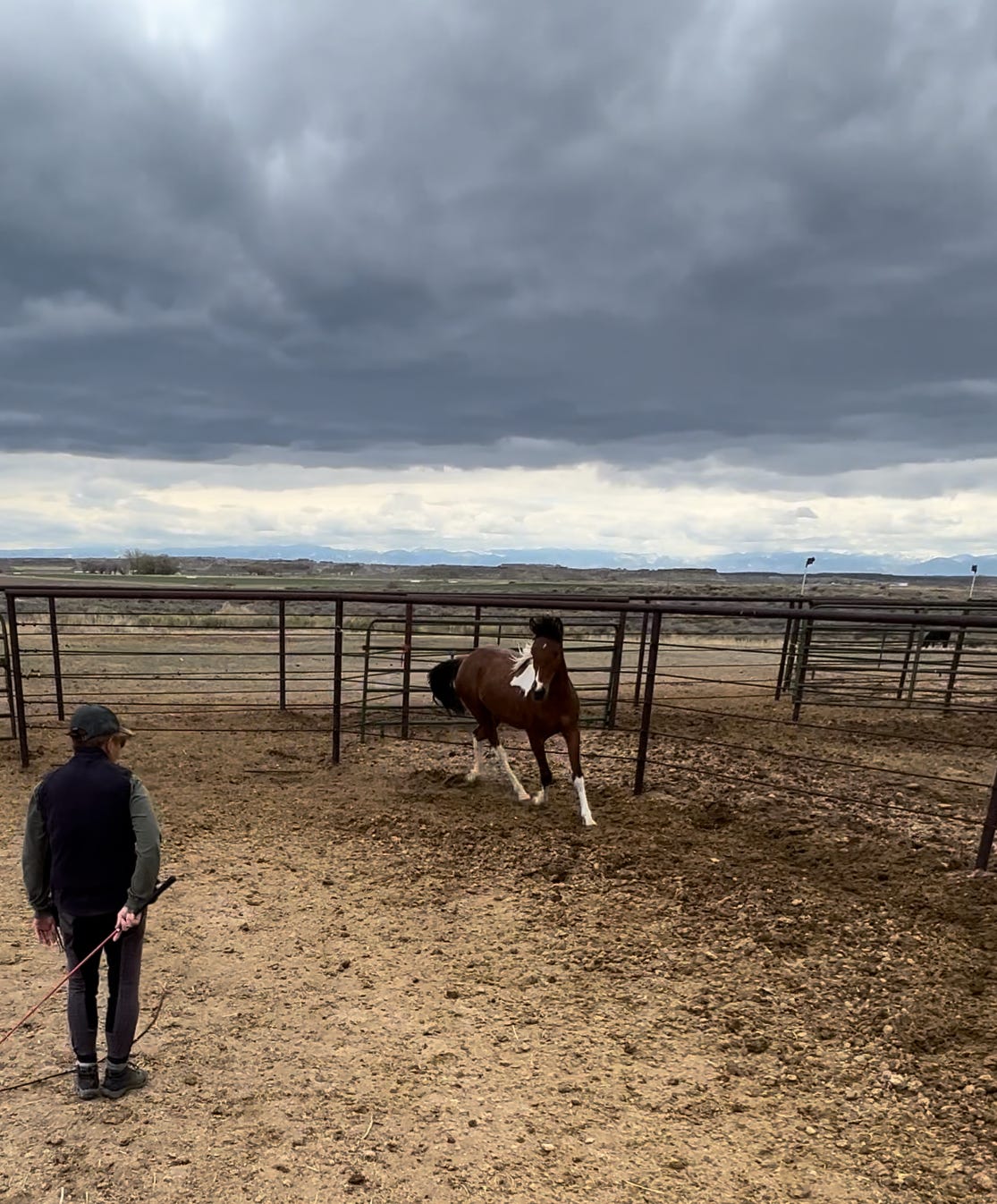Subjective: Dependent on or taking place in a person's mind rather than the external world; based on a given person's experience, understanding, and feelings; personal or individual.
Objective: Uninfluenced by emotions or personal prejudices; actual or real; based on facts.
In this article, I’m going to focus on objectivity.
The more time I spend with my horses, the more I realize that how I interact with them depends on how I filter what is happening from moment to moment.
This is nowhere more true than when things don’t go as I’d imagined it would, or I’d planned. Negative emotions like anger often threaten to rise, which is never helpful.
Objectivity has been my watch word when deciding what to do when horses resist, fuss, or in anyway react negatively to me or my requests.
Objectivity requires me to think, not react, which is what I want my horses to do as well.
“Set it up and wait” is one piece of advice that sets my mind into an objective perspective. This involves logically creating the steps needed to teach your horse what you want, then waiting for the wanted response(s).
Backing up is a great task that can illustrate the power of setting it up and waiting. Backing up should be smooth and light, not a tug-of-war with your 1000 pound partner. I have seen many people get into a wrestling match with their horse when asking them to back up, something no one wants do, but somehow ends up happening.
Backing up is such a valuable tool to horse training, that doing it smoothly and lightly is critical to other tasks as a horse progresses in its skill set and understanding.
Steve recently watched me riding my 4 year-old Half-Arabian/Andalusian mare, Flash, who backed up softly and easily at the end of our session. It didn’tstart that way!
This is first a result of time spent on the ground teaching her to move away from pressure, both steady pressure when I’m touching her directly with my hands or through a halter and/or rope, and indirect pressure at a distance with my body or a tool like a rope or stick.
Steady pressure is the preeminent way we communicate with horses when we ride, so teaching this fundamental concept on the ground sets me up for success in the saddle.
There are 4 ways that I’ve used to get an appropriate response from my horse:
Apply pressure lightly then slowly and precisely add to the pressure
Change the kind of pressure
Combine different forms of pressure
Combine pressure with predictable steps that the horse can follow to achieve the response desired
You’ve probably guessed when reading that list, the last way has been the most successful for me.
THE BACKUP
In the saddle, I sit lightly, I evenly shorten my reins holding them between my thumbs and first fingers, then think backwards. If my horse has not responded, I begin sequentially closing my fingers until all five fingers are closed on the reins at once. If my horse has still not responded, I draw my elbows backwards towards my waist. If my horse still hasn’t responded, I squeeze both legs on my horse and wait. I wait for any backward movement, then release the pressure and pet and praise my horse.
Eventually, l release to more effort, a rounded back, fluidity, distance, and a combination of those, to name a few. In this video, watch HAAP HAZARD backing up for the 3rd time under saddle. We had practiced many times from the ground.
The objective, consistent, and persistent pattern of this teaching technique creates predictability and reward for horses and humans both.
Horses will respond in all kinds of ways to being taught a new task. They might get stiff in mind and body, they might toss their heads, they might spin around, they might have to think first. But at some point, they will take a backward step which I can build upon. It requires patience and focus.
I don’t know everything that goes on in a horse’s mind when they are working out what they should do, but I do know they want to figure out what we want if we approach them properly. I also know what the eventual results are: horses learn to back up and look beautiful in the process.
The process is based on objective expectations and objective procedures, making the learning experience more predictable, safe, and enjoyable.
If you have questions for me about any of my posts, please feel free to contact me at isabellefarmer@gmail.com or click here: HAAP Farm Facebook page.
For more information about the amazing horses that have been and are being bred on the HAAP Farm, click here: HAAP farm web page.
Thanks for reading In the Mind of the Horse! Subscribe for free to receive new posts and support my work.
